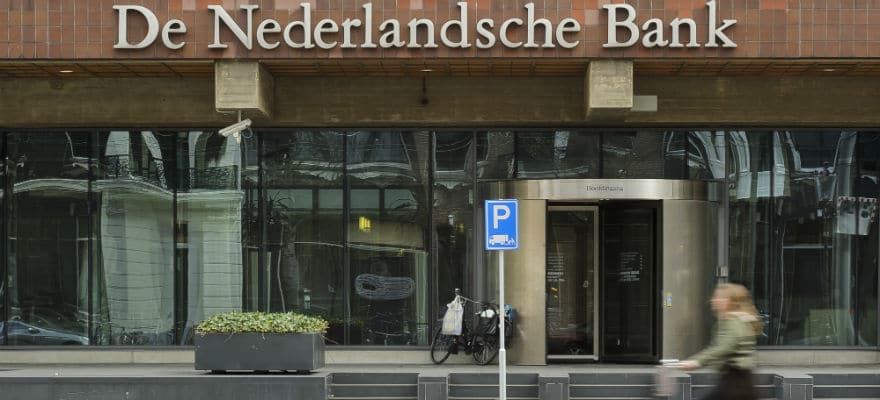The long-anticipated Ethereum update known as 'Casper FFG' has been replaced by a hybrid update called 'Casper v2'. It will combine two different kinds of upgrade - 'sharding' and 'proof-of-work'. I will explain.
Explanation
Etherium is a Blockchain that allows anyone to write and run their own smart contracts upon it. These can be used for all kinds of things - including designing competitors to Ethereum. It is so popular and widely used that one unit of its cryptocurrency, ether, will set you back 500 dollars apiece at the moment.
Casper is the name of an update to the Ethereum blockchain. It was initially proposed in November 2017. Fundamentally, it is a switch from a proof-of-work consensus system, which Ethereum currently uses, to a proof-of-stake one.
Moving away from a proof-of-work system is vital for Ethereum if it is to become 'scalable' - meaning if it is to become capable of handling the thousands of transactions per second necessary to become the world computer that it aspires to be.
Background
Proof-of-workdescribes a blockchain in which users compete to verify each new block, which involves computers solving a mathematical problem. A verified block is added to the chain, and the winning user is given some cryptocurrency in a process known as mining. The advantage of this system is that it creates a blockchain in the original sense of the word; open, decentralised, infallible. Bitcoin uses this system.
The disadvantages are that computing power becomes monopolised so that companies with rooms full of specialised machines do all the mining. It also makes for a very slow network, because too many users (or 'nodes') are active at the same time.
Proof-of-stake means that mining power is not defined by the power of your computer, but by the number of relevant cryptocurrency tokens that you own - one coin, one vote. Nodes sign a block that they want to mine and have a random chance of succeeding. The chance is higher the more coins are owned. The advantage of this is that the system will run faster. Users with high stakes should have no incentive to cheat the system because that would only undermine the value of their holdings.
A disadvantage of this system is what is referred to as the 'nothing at stake' problem. Users can sign on to every block because they are not risking anything; no computer power is being wasted. This means that the number of forks could increase exponentially as there is no encouragement to only approve the main chain. This would undermine the integrity of the system.
Casper and Casper FFG
Casper was the solution to the nothing at stake problem invented by the Ethereum team. In order to potentially mine blocks, nodes must store an amount of Ethereum in a designated wallet, some of which will be forfeit in the case of malicious behaviour.
?! my first public draft spec of Casper the Friendly Ghost a "correct-by-construction" blockchain consensus protocolhttps://t.co/8Y01zzS31t
— Vlad Zamfir (@VladZamfir) November 2, 2017
Casper FFG (Friendly Finality Gadget) was one of two versions of this idea and was supported by Ethereum founder Vitalik Buterin. Basically, it is a hybrid proof-of-work/proof-of-stake system that operates mainly with the former but pauses every so often to validate every fiftieth block via the latter.
Sharding
Sharding was yet another way proposed to speed Ethereum up. Essentially, it means that an additional, subservient chain (powered by proof-of-stake) would be attached to the main Ethereum blockchain. It would allow people to use this secondary system and thus lighten the load on the main one.
In terms of Ethereum specifically, a 'beacon-chain' was proposed which would exist alongside the main blockchain. It would create a new block automatically every few seconds and randomly find a node to validate it via the proof-of-stake mechanism that I explained earlier. These 'sharded' blocks would be where the transactions and accounts are stored. They would all be defined by the main, proof-of-work-powered main blockchain and added to it by 'cross-links'.
New hybrid - Casper v2

Source: Reddit
According to the Ethereum website, version 2 has been in the works for a couple of weeks now.
Justin Drake of the Ethereum sharding research team said via Reddit: "We are considering changing the Ethereum 2.0 roadmap to skip Casper FFG with 1500 ETH deposits. Instead, Casper and sharding validators would be unified from the get-go in the beacon chain, and deposits would be 32 ETH."
The new upgrade essentially switches the reliance of the system from the central PoW chain to the beacon chain itself. Most business is conducted there, and the chain is validated on the main chain at intervals. Eventually, the proof-of-work chain would die off.
It should be noted that the proposal is only 80 percent complete at the moment.
Buterin said at a recent conference that he believes that Ethereum could support a million transactions a second, given the correct upgrades: "So if you get a 100x from sharding and a 100x from Plasma, those two basically give you a 10,000x scalability gain, which basically means blockchains will be powerful enough to handle most applications most people are trying to do with them.”

















